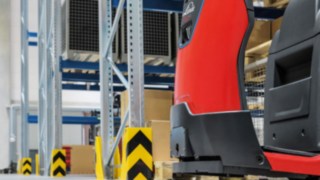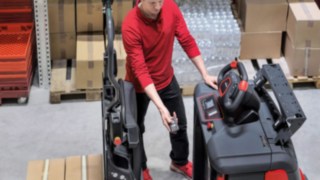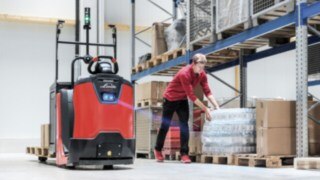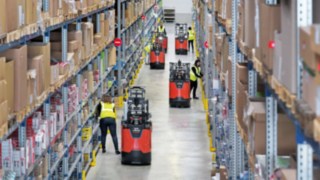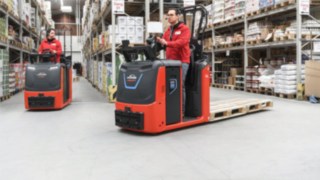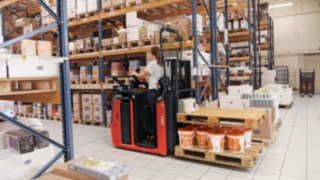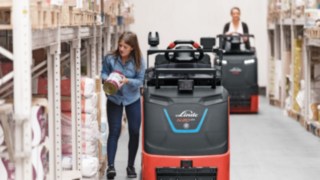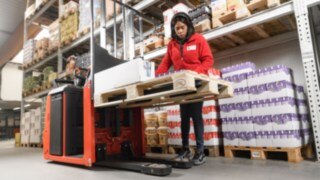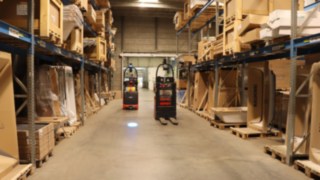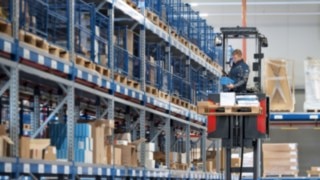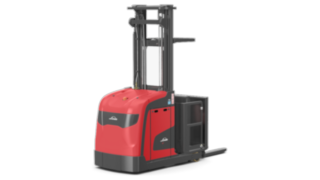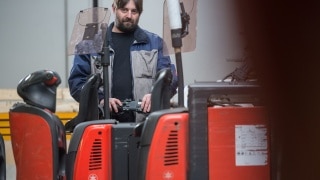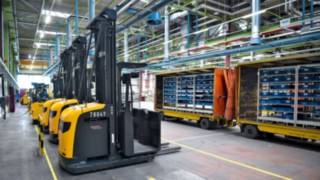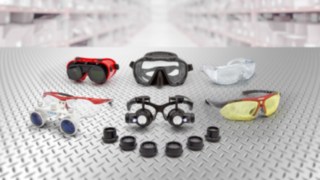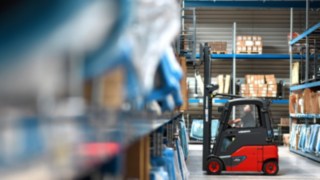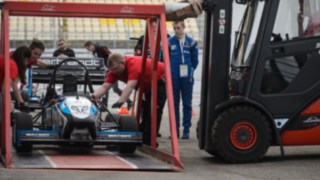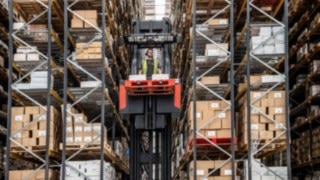The semi-automated option for order pickers N20 and N20 C
Automatically more efficient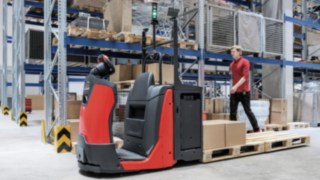
Digital process and supply chains and the growing individualization of products require greater automation of intralogistics processes. Horizontal order picking offers significant optimization potential in the warehouses of retail chains, logistics service providers, supermarkets, and drugstores. This process largely involves employees walking around the warehouse and manually picking and placing goods. These process steps become much more efficient with the help of the semi-automated option of the Linde N20 SA and N20 C SA order pickers, whilst also significantly increasing productivity and throughput in the warehouse.
Higher performance at every turn
As the interface to the human workforce, the industrial trucks play a central role in optimizing order picking. It is one of the most strenuous and time-consuming tasks in the warehouse with 30 to 45 percent of the working day being taken up by employees walking through the warehouse, and another 30 to 45 percent is spent manually picking and placing goods. It's clear to see that the optimization potential can be tapped into with the help of automation.
This is where the semi-automated driving modes of the N20 SA and N20 C SA order pickers come into play. They significantly reduce walking distances and the need to step on and off the truck, which has a direct impact on handling performance and productivity in the warehouse. Every step that the employee doesn’t take increases their performance and picking frequency. Tests using different picking methods showed around 20 percent higher performance with the semi-automated Linde order pickers compared to manually picking orders. One major advantage of the automated functions is that they can be seamlessly integrated into the customer’s processes, allowing employees to keep their usual picking routine but making it significantly faster and safer.
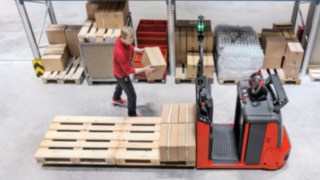
More efficient order picking
Linde conducted a performance test using three common picking methods to demonstrate the high optimization potential. The result: that compared to purely manual order picking, efficiency was increased by around 20 percent.
Runs along and drives ahead
Semi-automated operation offers two modes for the most common customer applications. One of the most frequent processes carried out in high rack warehouses is picking on one side of the rack, with a driver walking through the aisle in a U-shape; the “walk-with-me” mode is ideal for this process. In this driving mode, the truck follows the driver’s walking path: If the driver stops, the truck also stops and if the driver continues walking, the truck continues. The driver can stay at the rack and collect the goods making the constant walking to and from the driver’s platform and the end of the forks a thing of the past. The onward journey is triggered by the employee passing a certain point known as a “virtual wall”, and this can be set via the remote control.
In smaller warehouses, the “continuous” mode is ideal as the truck travels through the middle of the aisle and can be loaded from both sides. This will require the driver to walk a Z-shaped path between both sides of the rack to pick up and place goods. The driver benefits from the Stop & Go function by sending the truck ahead while staying on the fork side, thus shortening walking distances. If necessary, however, the driver can simply drive the truck themselves.
Safety of the Highest Standard
To ensure that semi-automated driving does not pose a safety risk, a high-performance safety scanner is integrated at the front of the trucks. This scanner detects people as well as other trucks and even obstacles that suddenly appear in front of the truck, in turn avoiding collisions and accidents. The position of the driver can be determined with centimeter precision via the remote control, which communicates via ultra-wideband technology with four antennas mounted on the truck. The semi-automated driving modes also lower error and accident rates by reducing the risk of injury from constantly getting on and off the truck. Special protection at the front of the bumper prevents the driver’s feet from getting run over by the truck. Several lights mounted on a pole indicate the current driving mode with different colors. They also illuminate when the truck is in the semi-automated mode and warn when the remote control is not paired with the truck. To ensure a safe and comfortable working space for the driver, the truck automatically maintains a minimum distance of 50 centimeters from the rack and stops at the end of the aisle to avoid collisions with other trucks on the main drive path in the warehouse.
